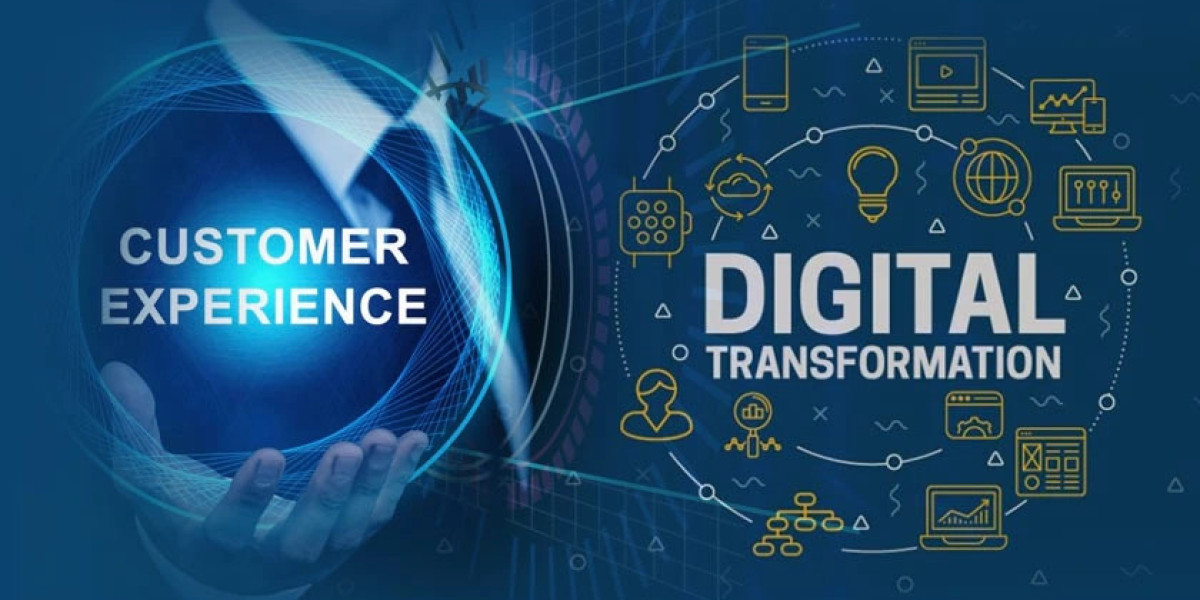As businesses continue to navigate the digital age, customer experience (CX) is quickly becoming a central pillar of their success. Digital transformation plays a crucial role in enhancing CX by enabling businesses to create more personalized, efficient, and seamless interactions across multiple touchpoints. However, knowing where to start and how to implement these changes can be overwhelming.
Step 1: Define Your Customer Experience Vision and Strategy
Before diving into technology and processes, it’s crucial to define a clear customer experience vision that aligns with your business goals. This vision should outline the ideal experience you want to provide to your customers at every touchpoint and through every interaction.
Key Actions:
- Understand your customers: Start by identifying your target customers, their needs, pain points, and expectations. Collect data from customer surveys, interviews, and social listening to get insights.
- Set CX goals: Based on your research, establish measurable goals for your CX transformation, such as increasing customer satisfaction, reducing churn, or enhancing personalization.
- Align CX strategy with business objectives: Ensure that your CX vision directly ties into your broader business goals, such as improving operational efficiency or boosting revenue.
Step 2: Map the Customer Journey
A critical part of the CX digital transformation process is understanding how customers interact with your business. This includes all their touchpoints, from their first visit to your website to post-purchase support. Mapping the customer journey provides a comprehensive view of how customers experience your brand, what their pain points are, and where you can improve.
Key Actions:
- Identify key customer touchpoints: These may include your website, mobile app, call center, social media platforms, and in-store experiences.
- Analyze customer behavior: Use analytics tools to track customer interactions, browsing habits, and purchasing behavior.
- Map pain points and friction areas: Look for bottlenecks or moments of frustration in the customer journey, such as long wait times or poor self-service options.
- Focus on emotional triggers: Understand how your customers feel during their journey—are they frustrated, delighted, or indifferent? Tailoring your CX based on these emotional responses can build stronger relationships.
Step 3: Leverage Data and Technology to Personalize Experiences
Personalization is a key element of modern customer experience, and digital transformation offers a wealth of tools to help businesses provide more individualized interactions. Personalization not only improves customer satisfaction but also increases the likelihood of repeat business and positive word-of-mouth.
Key Actions:
- Collect and analyze customer data: Use CRM systems, website analytics, and social media insights to gather data on customer preferences, past purchases, and behaviors.
- Use AI and machine learning: Leverage AI to analyze data and predict customer behavior, such as recommending products or services based on past interactions or browsing history.
- Implement personalized communication: Personalize email campaigns, website content, and even customer service interactions to show that you understand and value each customer’s preferences.
- Integrate omnichannel touchpoints: Make sure that personalized experiences are consistent across all channels (e.g., mobile apps, website, in-store, and customer support).
Step 4: Invest in Automation and AI
While human interaction is still critical to customer experience, automation and AI can significantly enhance operational efficiency and improve service delivery. Chatbots, virtual assistants, and AI-driven solutions can help businesses handle routine tasks, answer common customer inquiries, and even provide tailored product recommendations in real time.
Key Actions:
- Implement AI-driven chatbots: Use chatbots to assist customers with basic queries or guide them through the purchase process, allowing your team to focus on more complex issues.
- Automate repetitive tasks: Automate order tracking, appointment scheduling, and customer feedback collection to improve efficiency and reduce manual errors.
- Use predictive analytics: Implement AI to predict customer needs based on historical data, offering proactive solutions that increase satisfaction and retention.
Step 5: Optimize for Mobile and Self-Service Options
In today’s digital world, mobile optimization and self-service options are critical for providing a seamless customer experience. Many customers prefer to interact with businesses through mobile apps or self-service platforms, as they offer convenience and instant access to services.
Key Actions:
- Mobile-first design: Ensure your website and digital services are optimized for mobile devices, offering a user-friendly interface and fast load times.
- Create self-service portals: Provide customers with the tools they need to help themselves, such as FAQ pages, video tutorials, and a comprehensive knowledge base.
- Enable mobile payments and support: Offer multiple payment options through your mobile app or website and ensure that customer support is easily accessible from mobile devices.
Step 6: Focus on Proactive Customer Support
In the digital age, customers expect fast and efficient support. But what sets businesses apart is the ability to be proactive, anticipating issues before customers even need to reach out. Proactive support helps build trust and improves customer satisfaction by addressing problems in advance.
Key Actions:
- Implement predictive support tools: Use AI and analytics to identify potential issues and provide solutions before customers encounter them. For example, if a delivery is delayed, notify customers before they contact you.
- Offer live chat and instant communication: Live chat, whether through AI or human agents, allows customers to resolve issues quickly and efficiently. Integrating chat options into your website or mobile app ensures immediate access to support.
- Collect and act on feedback: Regularly ask for feedback through surveys or post-interaction surveys and use this information to identify opportunities for improvement.
Step 7: Measure, Analyze, and Continuously Improve
The journey of improving customer experience through digital transformation is ongoing. Once you have implemented the strategies, it’s essential to continuously measure and analyze the effectiveness of your efforts. Use key performance indicators (KPIs) to track your progress and identify areas for improvement.
Key Actions:
- Define KPIs: Track metrics such as Net Promoter Score (NPS), Customer Satisfaction (CSAT), Customer Effort Score (CES), and Customer Lifetime Value (CLV) to gauge how well your CX initiatives are performing.
- Use customer feedback: Continuously collect feedback through surveys, social media listening, and direct customer interactions to understand what works and where improvements are needed.
- Make data-driven decisions: Use insights from analytics tools to tweak your strategy and implement new solutions based on customer needs and preferences.
- Foster a culture of continuous improvement: Encourage employees to identify opportunities for improvement and adopt an iterative approach to enhancing CX.
Step 8: Empower Your Team and Train for Success
Your employees play a vital role in delivering an exceptional customer experience. They need to be equipped with the right tools, knowledge, and mindset to ensure your digital transformation efforts are successful. Empower your team to act with autonomy while staying aligned with your CX goals.
Key Actions:
- Provide training on new tools and technologies: Ensure employees are trained on the new digital tools, AI systems, and automation platforms you’ve integrated into your CX strategy.
- Foster a customer-first culture: Train employees to prioritize customer satisfaction and empower them to go above and beyond to solve problems and provide excellent service.
- Align teams: Ensure that all departments, from marketing to customer support to IT, are aligned on the CX strategy and work collaboratively to achieve shared goals.
Conclusion: A Holistic Approach to CX Transformation
Improving customer experience through digital transformation requires a holistic approach that integrates technology, data, and human elements. By following this step-by-step guide, businesses can deliver more personalized, efficient, and engaging customer interactions that lead to increased satisfaction, loyalty, and long-term growth.
Remember, digital transformation is not a one-time project but an ongoing process. Continuously monitor customer behavior, adjust your strategies, and embrace new technologies to stay ahead of the competition and keep your customers happy.







